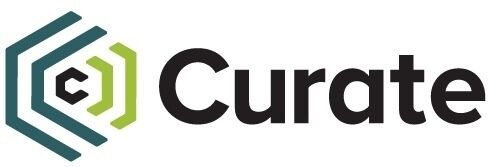
Post-Election Outlook: The Top Issues for State Policymakers in 2023
by Lydia Stowe, FiscalNote
A look at the top issues on state legislative agendas in 2023.

The results of the 2022 midterm elections have already begun to determine the political sway and legislative decision-making in some states — and will continue to do so over the next few years. On Nov. 8, gubernatorial elections were held in 36 states and three territories, and all 435 U.S. House seats plus 34 of the 100 Senate seats were on the ballot. As a result, Democrats kept control of the U.S. Senate, winning 51 seats in the chamber, and Republicans hold 49. However, Republicans won control of the U.S. House with 222 seats to Democrats' 213 seats.
These results won’t greatly change the top issues of most legislative sessions: budget, health care, and education. The nation’s state policymakers are focused on a few other major themes, however, many of which result from this year’s inflation, federal legislation, and trending issues.
In this year’s Biggest Issues Facing State Legislators Report, we took a deep dive into the issues. Here are a few of the highlights.
The Biggest Issues Facing State Legislators in 2023
Get an in-depth look at the biggest issues state legislators will tackle in 2023.
Inflation Relief at the State Level
The national inflation rate is at an all-time high. America’s annual inflation rate jumped from 1.4 percent at the end of 2020, to 7 percent by December 2021. That number reached 9.1 percent in June 2022, prompting nationwide economic concern. These spikes in inflation caused five federal interest rate hikes last year.
These trends could trigger a recession, cause a rise in unemployment, lead to household financial instability, and more. In response, President Joe Biden signed the Inflation Reduction Act in August 2022 with three main goals: lower costs for prescription drugs, health care, and energy. While citizens await certain incentives and obligations to take effect, it’s predicted state governments will tackle inflation relief locally.
A few ways states are looking to handle inflation relief based on this year’s trends are:
Rebates and stimulus checks
Addressing price gouging
Retaining state workforces
Reducing personal income tax
To learn more about each of these methods and the states considering them, download the full report.
States Debating Reproductive Rights in 2023
On June 24 2022, the U.S. Supreme Court overturned the constitutional right to an abortion, reversing Roe v. Wade after issuing its opinion in Dobbs v. Jackson Women’s Health Organization. This ruling has opened the door for states looking to ban or further restrict abortion access. Now, many abortion prohibitions and restrictions have gone into effect or remain held up in court.
Reproductive health care will remain a top issue this year. States will continue responding to the ruling by restricting abortion, adding protections to it, or changing access based on midterm election results.
On Nov. 8, California residents voted to amend the state constitution to guarantee the right to abortion and contraception; Kentucky residents rejected a ballot measure that would try to deny any constitutional protections for abortion; and Vermont residents voted for an amendment that protects abortion access under the state's constitution. Many states will continue debating these restrictions well into 2023.
Download The Biggest Issues Facing State Legislators in 2023 Report for a list of other states to keep an eye on in 2023 based on midterm election results.
Infrastructure Investments
In 2021, President Biden signed the bipartisan $1.2 trillion Infrastructure Investment and Jobs Act into law with goals of rebuilding physical infrastructure, expanding access to clean drinking water and high-speed internet, tackling climate change, investing in underserved communities, bolstering the supply chain, and more. It’s expected these funds and the nation’s collective focus on these investment areas will ignite rehabilitation efforts for states in 2023.
Investment areas for states under the bill include highways, electric vehicle charging infrastructure, fixing railroads, energy efficiency, water infrastructure, and broadband internet access. Learn more about the biggest issues in infrastructure funding by downloading the complete report.
Manage Stakeholder Relationships and Track Legislation at the State Level with FiscalNote
In this age of constant change, the ability to keep track of your policy issues, streamline collaboration, report effectively, and communicate with your stakeholders is more critical than ever.
FiscalNote State allows you to manage your stakeholder relationships, keep your team on the same page, and track multiple bills in multiple states all in one place with a highly customizable platform. FiscalNote has all the tools you need to build and execute a successful, 360-degree state government affairs strategy while staying organized and having the most up-to-date information at your fingertips.
Ready to see for yourself?
Learn how FiscalNote can help you manage your state-level issues.













